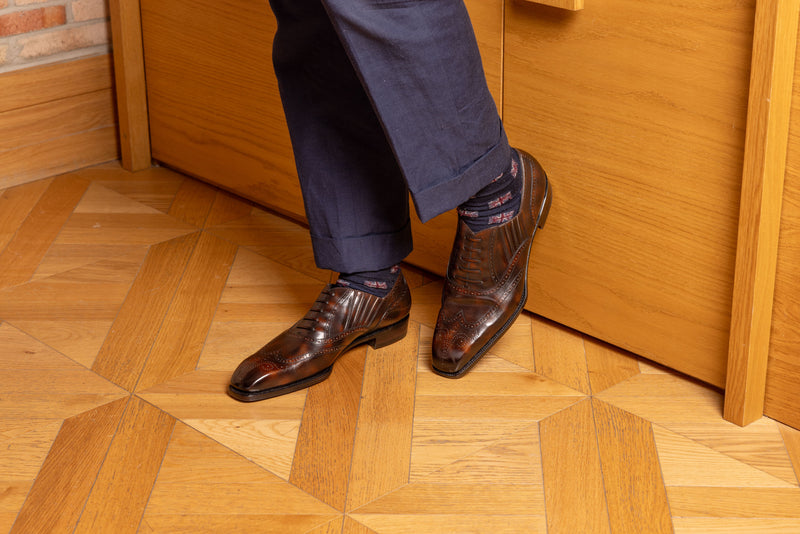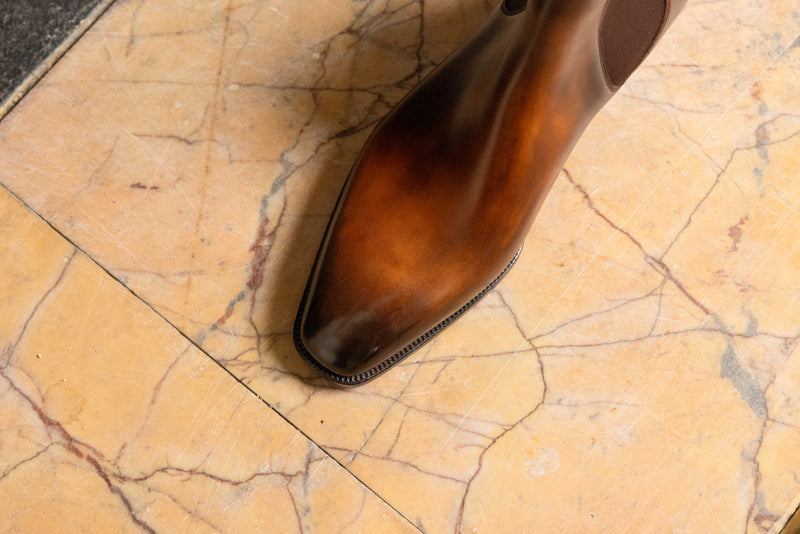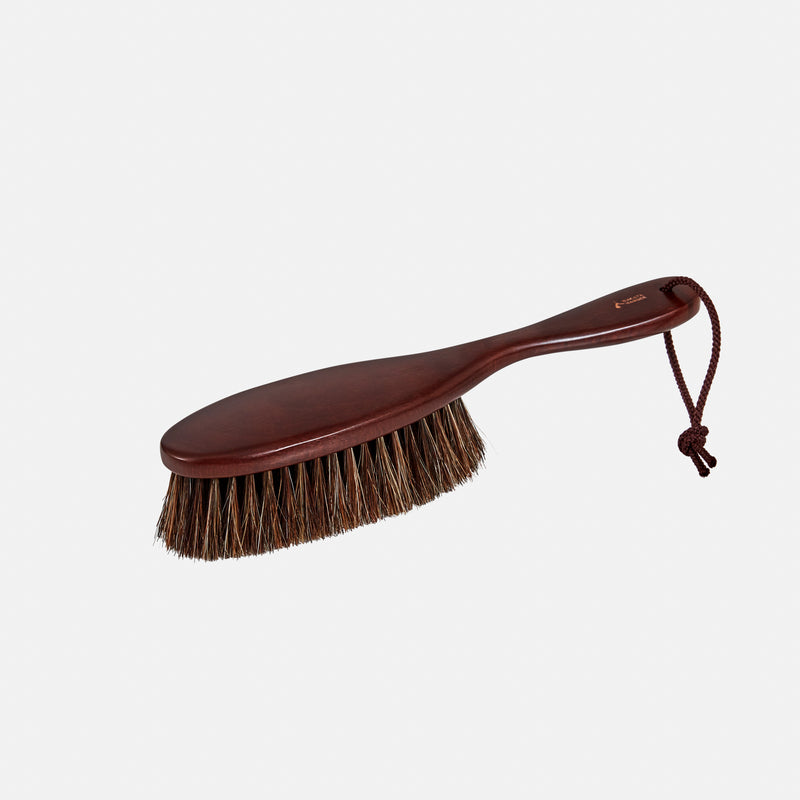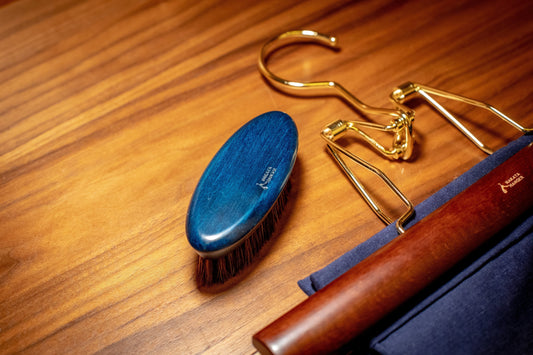In contrast to modern western methods of wood working, whereby hanger planks are mechanically sanded (during the final stages of shaping), specialist hand blades are the preferred tool of choice in traditional Japanese wood working.
This is because planing by blade leaves the natural grain of the wood intact, whereas sanding often smears the pattern of the wood. The result of hand planing is also an ultra-smooth surface.
Depicted in this video is a Japanese artisan making use of a two-hand planer, which is made out of wood, but has a sharp steel blade in the middle. This planer is a type of "Nankin kanna" -- "Nankin" meaning Nanjing and "kanna" meaning blade. Presumably, it originated from Nanjing. In the later stages of stages of hanger production, and after an approximate shape is cut from a wooden block using a modern band saw, the hanger needs to be further refined into shape.
Notice that the artisan pulls the nankin kanna towards themselves, rather than push away as is common in Western woodworking.
The benefit of hand-planing is that the grain of the wood remains intact, as mechanical sanding will bend over the fibres and "smear the grain", as it were. Now, if one were, say, slapping some thick paint on it, then I suppose that this wouldn't matter so much. But, on the other hand, if one wanted to preserve the grain for aesthetic reasons, then this matters greatly.

But, interestingly, it is a mark of a master craftsman to be able to leave long wood shavings.
It has also been said that hand-planing results in an ultra-smoother finish, which is not present in ordinary hangers. This is allegedly due to the effect of the blade evenly peeling wood back. Whether this is true remains an area of contention amongst master wood workers. But what is for sure is that hand-planing certainly does not hurt..
The alternative is sand-finishing which may result in a rougher surface, up-close. Perhaps, a microscope will reveal the mini valleys and hills that sanding creates. A quick search on Google seems to corroborate this view by repeated cropping up of the phrase "surface fuzziness".



















